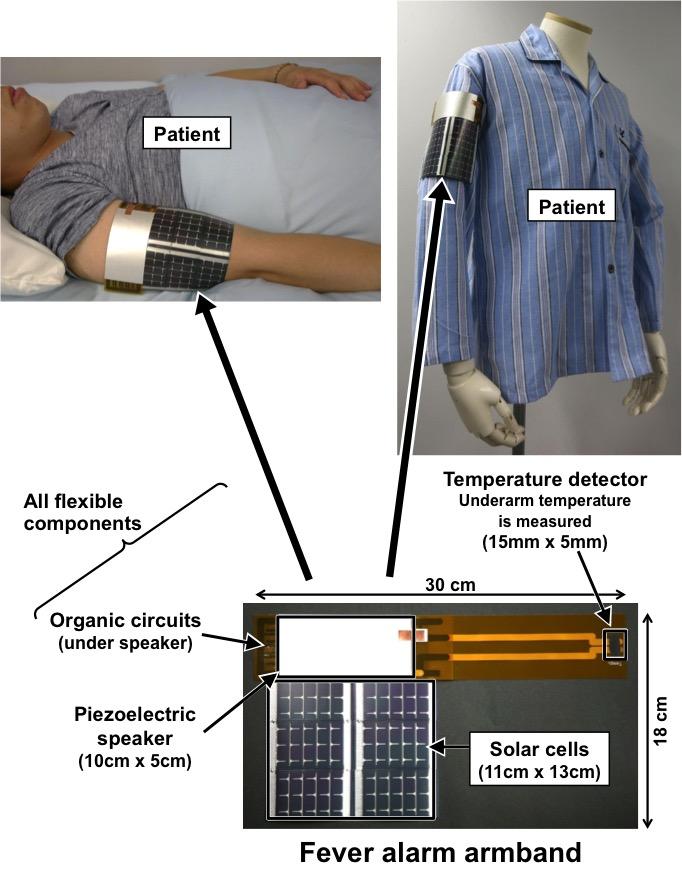A wearable, 3D-printable temperature sensor
February 23, 2015

The armband can be worn either directly on the skin or on top of clothing. The thermal sensor is located between the arm and the body. The organic power supply circuit is located under the piezo film speaker to reduce surface area. (credit: Sakurai Lab./Someya Lab)
University of Tokyo researchers have developed a “fever alarm armband,” a flexible, self-powered wearable device that sounds an alarm in case of high body temperature.
The flexible organic components developed for this device are well-suited to wearable devices that continuously monitor vital signs including temperature and heart rate for applications in healthcare settings.
The new device combines a flexible amorphous silicon solar panel, piezoelectric speaker, temperature sensor, and power supply circuit created with organic components in a single flexible, wearable package.
Constant monitoring of health indicators such as heart rate and body temperature is the focus of intense interest in the fields of infant, elderly and patient care.
A design challenge
Sensors for such applications need to be flexible and wireless for patient comfort, maintenance-free, cheap enough to permit disposable use to ensure hygiene, while not requiring an external energy supply.
Conventional sensors based on rigid components are unable to meet these requirements, so the researchers to developed a flexible solution that incorporates organic components that can be printed by an inkjet printer on a polymer film.
The researchers say the fever alarm armband is the first organic circuit able to produce a sound output to provide audible information when the flexible thermal sensor detects a pre-set value within the ranges of 36.5 ºC to 38.5 ºC. It’s also the first to incorporate a power supply circuit, which increases illumination by more than 7 times in indoor lighting conditions.
“Our fever alarm armband demonstrates that it is possible to produce flexible, disposable devices that can greatly enhance the amount of information available to carers in healthcare settings,” said research group leader professor Takao Someya.
“We have demonstrated the technology with a temperature sensor and fever alarm, but the system could also be adapted to provide audible feedback on body temperature, or combined with other sensors to register wetness, pressure or heart rate.”